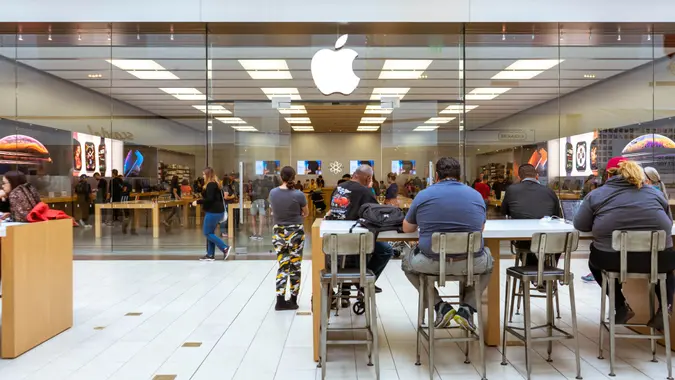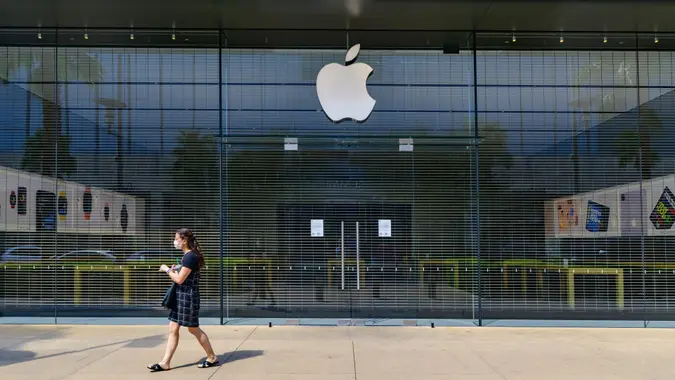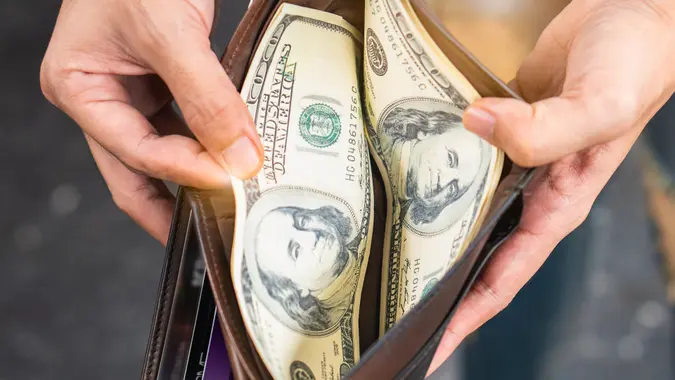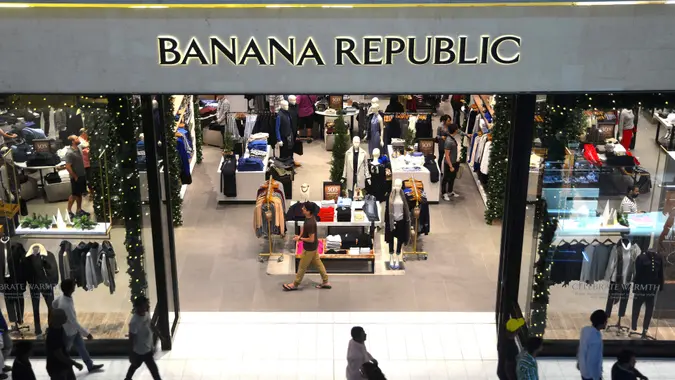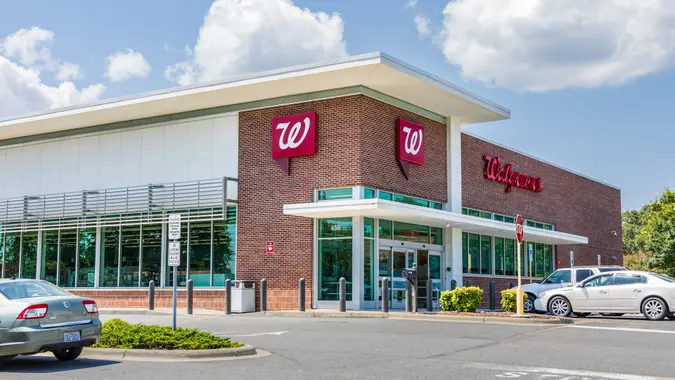4 Grocery Items To Buy Now Before Tariffs Raise Prices This Summer

Commitment to Our Readers
GOBankingRates' editorial team is committed to bringing you unbiased reviews and information. We use data-driven methodologies to evaluate financial products and services - our reviews and ratings are not influenced by advertisers. You can read more about our editorial guidelines and our products and services review methodology.

20 Years
Helping You Live Richer

Reviewed
by Experts

Trusted by
Millions of Readers
President Trump paused his heavy-handed reciprocal tariff policy under pressure from turmoil in the bond and stock markets — but he offered only a 90-day reprieve. Many shoppers are using that window to buy goods that will likely get more expensive when the three-month respite ends this summer.
Biden-era inflation taught the country that rising prices will probably hit their grocery budgets first and worst. Even so, it doesn’t make sense to stockpile many grocery products now, regardless of what the economic future holds.
For example, CNET predicts the price of bananas will rise faster than just about anything in the supermarket. However, bananas have short shelf lives, and if you freeze them, they become mushy once thawed.
The trick is to identify the grocery items that are the most vulnerable to tariffs and also have stable shelf lives or can tolerate months of freezer storage. Start with these four high-volatility, long-lifespan products.
Also see seven items to stock up on in response to Trump’s tariffs.
Seafood — Especially Fish and Shrimp
The CNET analysis found that fish and shrimp should be at the top of the list for households that buy seafood. Shoppers should concentrate on products that the U.S. can’t produce at scale and must import.
Fish and shrimp — both of which freeze well — certainly qualify, as most come from India, Vietnam and elsewhere in Asia. The CNET analysis predicts that tariffs will raise the cost of both by 20% to 50% at the port and only slightly less in the supermarket.
Coffee
According to a press release for the 2025 National Coffee Data Trends report, coffee is America’s beverage of choice. Roughly 66% of the country partakes, and the average consumer slurps down three cups per day. That’s more than juice, bottled water, tea and even soda, enough to account for 8% of the total U.S. food service sector.
However, as with bananas, America’s climate, geography and agricultural economy don’t allow for large-scale domestic production of coffee. A handful of American companies grow coffee beans, but they’re small-scale operations based mostly in California, Puerto Rico and Hawaii, forcing the U.S. to rely almost exclusively on imports from places like Brazil, which dominates the industry with a 38% market share, according to the U.S. Department of Agriculture.
According to Coffee Intelligence, coffee prices are already at a record high of over $4 per pound and are projected to rise by another 20% to 25%, depending on what tariffs are enacted and enforced. If you buy it in bulk before that happens, Southern Living wrote that freezing coffee can add up to six months to its shelf life.
Chocolate
Chocolate is much like coffee — Americans can’t seem to live without it, yet can’t grow anywhere near enough domestically to support their habit. According to Statista, the U.S. gobbles up 2.82 billion pounds per year. However, production starts with the seed of the tropical Theobroma cacao tree, which is predominantly found in Africa but is native to South America and can’t grow in many places in the U.S.
The Guardian reported that climate-related disruptions in Africa, which harvests 70% of the world’s cocoa, have contributed to a 400,000-ton cocoa deficit that sent prices soaring from $2,000 to $12,000 per ton in recent years.
The most optimistic assessment is that America produces maybe 100 tons per year. With tariffs tossed into an already volatile and vulnerable market, precise price prediction is impossible. However, Forbes reported that shoppers should expect increases on store-bought chocolate in the coming months.
Nuts
As with coffee and chocolate, Americans have a gargantuan appetite for nuts, but nowhere near the domestic production capacity to meet that demand.
The U.S. grows peanuts and pecans in quantity, but it relies on imports for many macadamias, cashews and Brazil nuts it consumes — all of which are vulnerable to the same climate disruptions as chocolate.
Current conditions make price predictions impossible, but as with chocolate, the nut industry is already experiencing turmoil and reinstated tariffs are likely to add at least 10% to the cost.
Editor’s note on political coverage: GOBankingRates is nonpartisan and strives to cover all aspects of the economy objectively and present balanced reports on politically focused finance stories. You can find more coverage of this topic on GOBankingRates.com.
Sources
- CNET, “These Groceries May See a Price Spike Because of Tariffs.”
- PR Newswire, “More Americans drink coffee each day than any other beverage, bottled water back in second place.”
- U.S. Department of Agriculture, “Production – Coffee.”
- Coffee Intelligence, “How Trump’s trade wars are fuelling even higher coffee prices.”
- Southern Living, “Can You Freeze Coffee?“
- Statista, “Chocolate in the United States – statistics & facts.”
- The Guardian, “US chocolate prices surge amid soaring cocoa costs and tariffs.”
- Forbes, “What To Buy Before Tariffs Make Everything More Expensive.”
 Written by
Written by  Edited by
Edited by 







